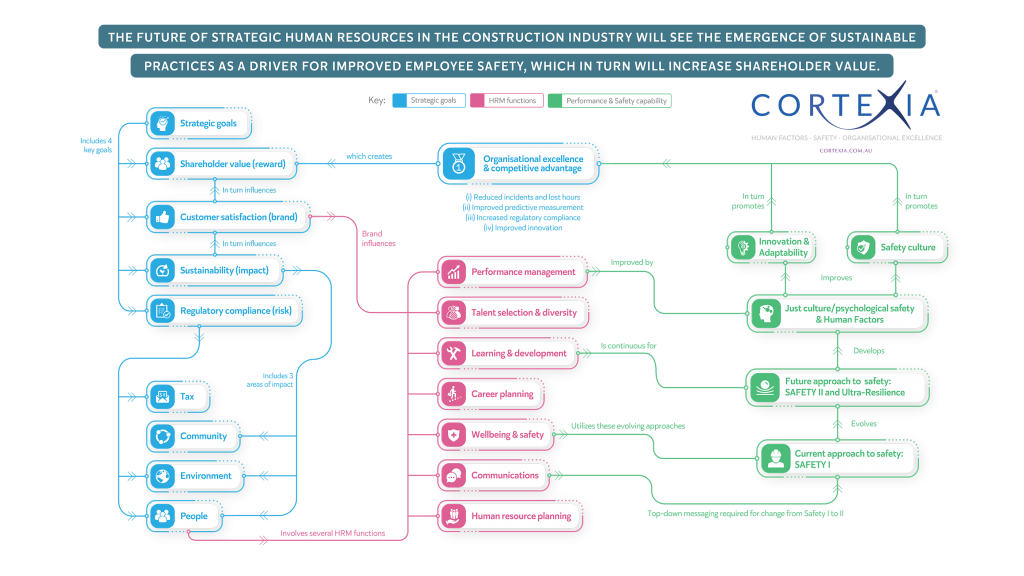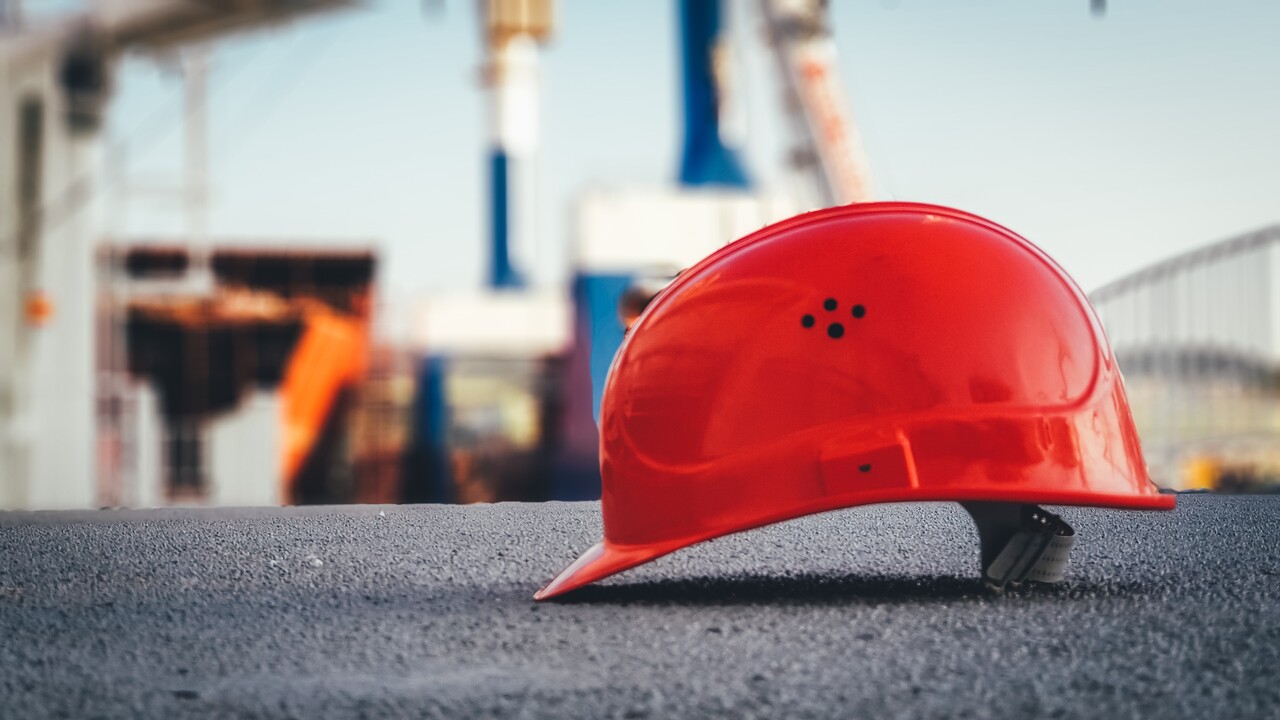The future of strategic human resource management in the construction industry will see the emergence of sustainable practices as a driver for improved employee safety and performance, which in turn will increase shareholder value.
HRM leveraging change
The Australian construction industry is poised to evolve over the next 5 to 10 years, with strategic human resources leveraging some of the change. Leading construction firms are establishing human resource practices that promote workplace safety not simply because of compliance with building regulations, but because there is a direct correlation between improved safety and increased shareholder value (Edmondson, 2018).
Human resource practitioners are shifting to an outside-in approach, as customers are attracted to brands that use sustainable practices for the community and the environment. Also, a strong brand connected with sustainable practices helps the firm to attract talent and maintain a more diverse workforce. In turn, these practices resonate with the shareholders of fund managers, who finance major development projects.
A new standard of safety and workforce performance
The current standard for workforce safety, called Safety I, sits within construction project management. Safety I approach applies controls, with improvements made as a reaction to an incident. However, a new standard of safety, called Safety II, is more proactive and value creating. Safety II looks for deviations and ambiguities, while also approaching performance from a systems thinking perspective (Gebauer, 2021). Coupled with a systematic application of Human Factors (see Appendix A for short video) methods, Safety II can improve the performance and agility of the workforce and the overall company, crossing into the domain of strategic human resources (Hughes & Thorpe, 2014). Safety II complements Safety I and does not replace it, so PMs will work side by side with HR and HF practitioners to pro-actively improve workforce performance (Martins, et al., 2022).
Safety II requires that employees feel psychologically safe and “replaces blame with curiosity” (Delizonna, 2017). In such a culture (referred to as ‘just culture’), employees can report near misses and systemic issues that can be used as leading indicators for possible future incidents. The human resources practices will require a more embedded and regular approach to performance management, which is reinforced by top-down leadership communications from senior management. In additional to building a culture of safety, Safety II fosters greater creativity and innovation, as team members feel they can share without judgement or blame (Rozovsky, 2015). To quote Amy Edmundson (2018, p.2):
"A 2017 Gallup poll found that only 3 in 10 employees strongly agree with the statement that their opinions count at work. Gallup calculated that by “moving that ratio to six in 10 employees, organizations could realize a 40 percent reduction in safety incidents and a 12 percent increase in productivity. That's why it's not enough for organizations to simply hire talent. If leaders want to unleash individual and collective talent, they must foster a psychologically safe climate where employees feel free to contribute ideas, share information, and report mistakes.”
Why bother?
When human resources management implement a HF and Safety II approach it promotes business excellence, which creates competitive advantage, through: (i) reduced incidents and lost hours; (ii) improved predictive measurement; (iii) increased regulatory compliance; and (iv) improved innovation (Tickle, et al., 2016).

What lies ahead?
Defining its people as a sustainable resource is a change in strategic human resources, which construction firms need to embrace if they are going to deliver shareholder value. Implementing this strategic approach requires that human resource functions are focused on new approaches to safety, which evolves the safety culture from one of compliance and risk to proactive value creation. Without a shift in safety and performance thinking, construction firms will perform more poorly than their competitors.
References:
Delizonna, L. (2017, August 24). High-Performing Teams Need Psychological Safety. Here’s How to Create It. Harvard Business Review. https://bit.ly/3q5C1Tr
Edmondson, A. (2018). The fearless organization: Creating psychological safety in the workplace for learning, innovation, and growth. John Wiley & Sons.
Gebauer, A. (2021, September 21-23). How to foster sustainable change, Example from different industries. [Paper presentation]. 4th International Workshop on Safety II in Practice. https://safetysynthesis.com/wrkshp_2021
Hughes, R., & Thorpe, D. (2014). A review of enabling factors in construction industry productivity in an Australian environment. Construction Innovation, 14(2). 210-228. https://doi.org/10.1108/CI-03-2013-0016
Martins, J., Carim, G., Saurin, T., & Costella, M. (2022). Integrating Safety-I and Safety-II: Learning from failure and success in construction sites. Safety Science, 148, 105672. https://doi.org/10.1016/j.ssci.2022.105672
Rozovsky, J. (2015, November 17). “The five keys to a successful Google team.” re:Work Blog. https://rework.withgoogle.com/blog/five-keys-to-a-successful-google-team/
Tickle, M., Mann, R., & Adebanjo, D. (2016). Deploying business excellence–success factors for high performance. International Journal of Quality & Reliability Management. https://bit.ly/3JRt1cd

